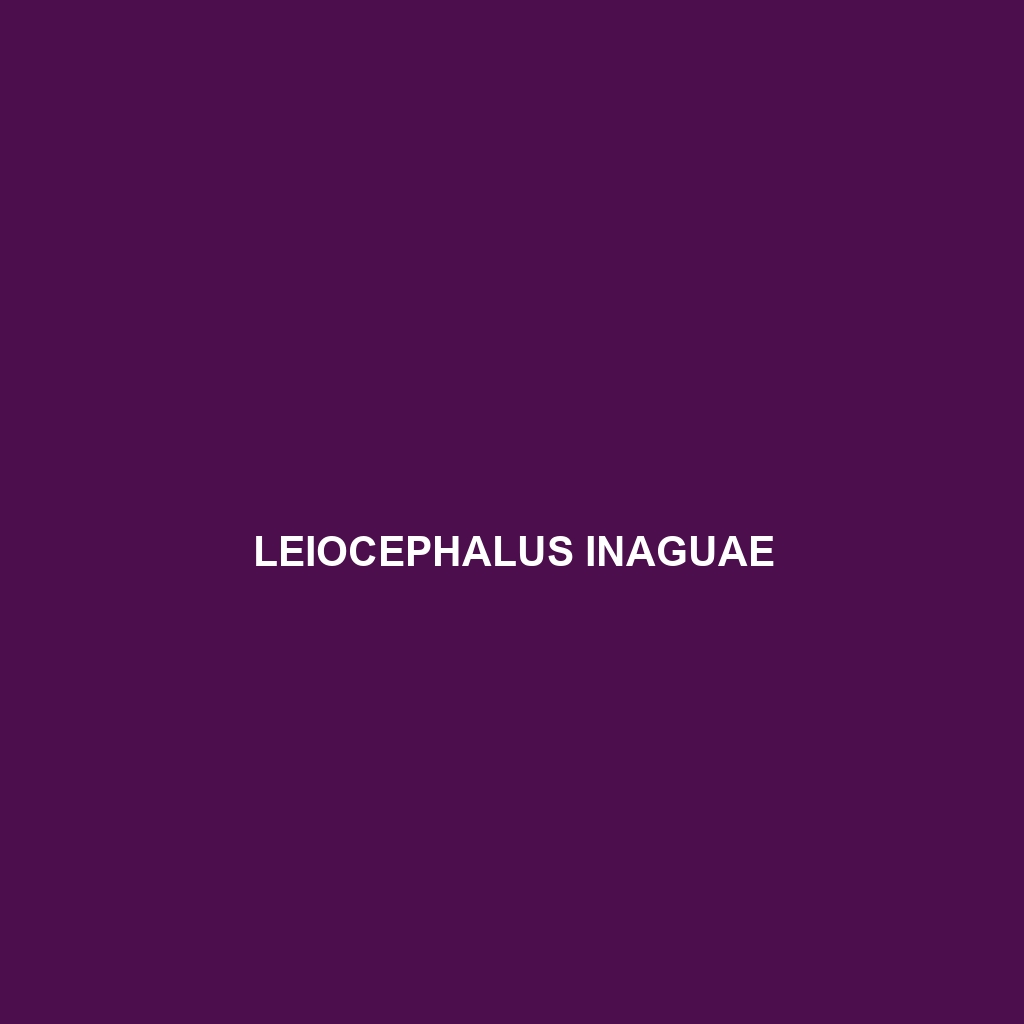Common Name
Leiocephalus inaguae
Scientific Name
Leiocephalus inaguae
Habitat
Leiocephalus inaguae, commonly known as the Inagua Curlytail Lizard, is primarily found in the pristine and diverse ecosystems of the Inagua Islands in the Bahamas. These islands are renowned for their unique combination of subtropical climates, which feature warm temperatures and seasonal rainfall, creating an ideal habitat for this species. Leiocephalus inaguae thrives in coastal areas, characterized by dry scrubland, sandy beaches, and rocky outcrops. The lizard’s preferred environments include open savannas and patches of xeric shrubland, where it can easily blend into its surroundings, facilitating both hunting and evasion from predators. Additionally, these lizards are often found in disturbed areas, showcasing their adaptability to different habitats, from lush tropical forests to semi-arid environments.
Physical Characteristics
The Leiocephalus inaguae typically measures between 12 to 15 inches in total length, making it a moderate-sized lizard. Its body is elongated and slender, with a distinctive flattened head and large, prominent eyes that provide excellent vision—an adaptation well-suited for spotting predators from a distance. The color of the Inagua Curlytail Lizard varies significantly, exhibiting shades from light brown to a more vibrant green or grayish-green, often accented with darker stripes or spots. One of its most notable physical features is its long, curly tail, which not only aids in balance and agility but also serves as a visual signal to potential mates during courtship displays.
Behavior
Leiocephalus inaguae displays a variety of intriguing behaviors. Primarily diurnal, these lizards are most active during the day, engaging in basking to regulate their body temperature. They are known for their social interactions, particularly during the breeding season when males exhibit territorial displays, including head bobbing and push-ups to attract females. Interestingly, they demonstrate a unique hunting technique, often waiting patiently to ambush their prey rather than actively pursuing it—a behavior that is notably energy-efficient. These lizards can be observed engaging in short bursts of speed when fleeing from threats, showcasing their agility and quick reflexes.
Diet
The diet of Leiocephalus inaguae primarily consists of insects, making it an insectivore. They feed on a variety of small invertebrates, including grasshoppers, beetles, and spiders. Additionally, they are known to consume plant matter, particularly flowers and fruits, indicating an omnivorous aspect to their diet. By foraging in different habitats, they play a crucial role in controlling insect populations while also pollinating various plant species, contributing to the ecological balance of their habitat.
Reproduction
The reproductive cycle of Leiocephalus inaguae typically takes place during the warm months, with mating occurring between late spring and early summer. After a gestation period lasting approximately 4 to 6 weeks, females lay a clutch of 2 to 8 eggs in sandy or moist substrate, where the eggs incubate for about 6 to 8 weeks before hatching. Parental care is minimal post-hatching; however, the hatchlings are precocial and can fend for themselves immediately. This reproductive strategy helps ensure that at least some offspring survive to maturity, despite the high predation risk from various predators such as birds and snakes.
Conservation Status
According to the International Union for Conservation of Nature (IUCN), Leiocephalus inaguae is currently listed as Vulnerable. This status is primarily due to habitat loss resulting from development and human activity, as well as predation by introduced species such as cats and rats. Conservation efforts are in place, focusing on habitat preservation and public awareness campaigns to protect this unique lizard. Continuous monitoring of populations is essential to ensure that effective measures are implemented to prevent further decline.
Interesting Facts
One of the most fascinating aspects of Leiocephalus inaguae is its ability to regenerate its tail after losing it to a predator, a trait shared with many lizard species. This ability not only enhances their survival rates but also allows them to escape quickly from threats. Additionally, these lizards are known for their vibrant courtship displays, where males change their coloration during mating rituals, becoming more vibrant to attract potential mates.
Role in Ecosystem
Leiocephalus inaguae plays a vital role in its ecosystem as both a predator and prey species. By controlling insect populations, they help maintain balance within their habitat, preventing overpopulation and the transmission of pest-related diseases. Furthermore, their feeding habits contribute to the pollination of native plant species, promoting biodiversity. As prey, they are an essential food source for various birds and snakes, making them integral to the food web in the Inagua Islands.
